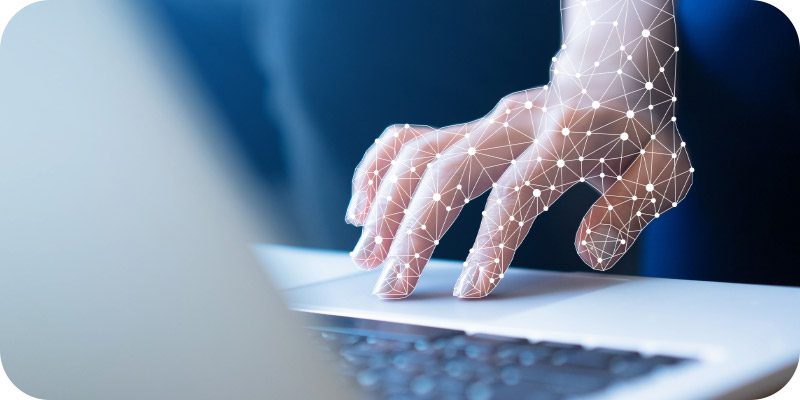Transforming Hourly Work with AI and Automation


Mitri Dahdaly, the VP of Solution Design at Legion Technologies, recently commented on how companies can transform hourly work with artificial intelligence (AI) and automation technologies. This article originally appeared in Insight Jam, an enterprise IT community that enables human conversation on AI.
 The hourly work experience needs an upgrade. New research shows that half of all hourly workers plan to leave their jobs within the next year, and more than a quarter seek unionization due to a poor workplace experience. This widespread dissatisfaction illustrates an ongoing employee experience crisis that will further imperil the operations of numerous industries—from retail to grocery, hospitality to medical services, and more—if left unaddressed.
The hourly work experience needs an upgrade. New research shows that half of all hourly workers plan to leave their jobs within the next year, and more than a quarter seek unionization due to a poor workplace experience. This widespread dissatisfaction illustrates an ongoing employee experience crisis that will further imperil the operations of numerous industries—from retail to grocery, hospitality to medical services, and more—if left unaddressed.
Following a year of rapid advancement and heightened public interest, artificial intelligence has been billed as a panacea for workplace woes, and the excitement is far from unfounded. AI promises to transform the hourly work experience at its full known potential, though not in the way ominous predictions about AI replacing workers might suggest. Instead, companies can leverage AI to improve decision-making and execution of workplace tasks, with humans remaining in control.
That said, properly implementing AI in the hourly workplace requires a thorough understanding of how different AI types work together and where human interaction becomes necessary.
Understanding Different Types of AI
A system is considered artificial intelligence if it automates a process that would otherwise require human intelligence or judgment. When applied to workforce management (WFM) applications, these processes range from demand prediction to compliance management to time-related functions like scheduling, timesheet approvals, and paid time off management.
Automating these time-consuming tasks can dramatically change the job experience for hourly workers. The intelligent automation of administrative tasks like schedule creation will save managers hours each week, which they can channel into more valuable activities like training new hires and interacting with customers. According to recent research, hourly managers ranked employee scheduling as the top workplace task they want intelligently automated.
AI that enables intelligent automation contributes to a more flexible work experience, giving employees more control over their schedules without placing additional stress on their managers. As a result, managers have more time to focus on training and coaching – the top area where they’d like to reinvest their time, per the Legion survey. With this extra guidance from their managers, hourly workers can perform their jobs more efficiently, competently, and confidently.
AI also has positive effects on a business’s financial performance. The intelligent automation of workforce management can lead to increased sales, drive down labor costs, and ensure proper staffing, the third of which plays a crucial role in business reputation, employee engagement, and customer satisfaction. However, these benefits don’t appear overnight. Organizations must implement automation strategically, meaning they need to know which types of AI perform which functions and to what extent.
As a primer, let’s examine some of the different types of AI and explore how they automate specific hourly workplace tasks.
Machine Learning
Machine learning describes AI algorithms that continuously improve over time based on experience and the use of the data that they process. Self-learning technology is especially valuable because it doesn’t require constant manual training. Instead of an engineer regularly updating the code, the algorithm automatically reconfigures itself in response to new data.
Machine learning models can power more accurate demand forecasting in a WFM platform. Before AI, managers often relied on gut feeling and instinct to predict demand, leading to frequent understaffing and overstaffing, jeopardizing employee well-being and the company’s bottom line. With machine learning, a WFM platform ingests a swath of influential data—from customer behaviors to weather forecasts—to create accurate demand projections for labor planning. These projections serve as a critical condition for employee scheduling, which, when automated against the forecast, can minimize the labor costs associated with each shift.
Ideally, algorithms will update regularly to create a more accurate portrait of how influencing factors evolve. With more frequent data pulls, the margin of error decreases; not only is it working off newer data, but the algorithm automatically improves as it processes more data over time. As a result, staffing is optimized based on highly precise demand forecasts.
However, machine learning should not replace human judgment entirely, especially in acute situations that could sway demand at a moment’s notice, like a traffic accident that blocks access to the store. Instead, the idea is to augment and improve human judgment with data-driven insights.
Expert Systems
Expert systems are the decision-making AI, emulating the cognitive capabilities of human experts in a fraction of the time. This type of AI works under strict constraints to generate viable solutions, such as an employee schedule that accounts for projected demand, employee availability, budgets, staffing rules, and compliance stipulations all at once. As part of a larger AI-powered WFM platform, expert systems can help frontline managers develop an optimal labor plan for every shift.
These systems can generate accurate schedules in as little as a few seconds. However, many companies are still relying on manual processes to create schedules that might align to accommodate peak busyness. According to Legion’s research, a quarter of managers still rely on Excel sheets to create hourly employee schedules, and 13 percent use extremely outdated paper schedules. Switching to an AI-powered scheduling solution reduces the risk of costly planning errors and saves managers valuable time.
Generative AI and Natural Language Processing
AI anxiety is real and could be holding companies back from maximizing automation. According to Legion data, 24 percent of hourly workers fear AI could replace them. In another survey from SafetyCulture, 40 percent of frontline workers ranked AI among their top three job concerns. However, AI is already improving the experience for these workers – not taking their jobs away.
Thanks to groundbreaking advancements, generative AI has dominated the headlines over the past year. Gartner defines generative AI (genAI) as “AI techniques that learn a representation of artifacts from data and use it to generate brand-new, unique artifacts that resemble but don’t repeat the original data.” With genAI, a pre-trained algorithm creates new content based on other content.
The information delivered and processed by a genAI copilot can service the workforce management processes of labor optimization and shift scheduling. Employees can easily express their needs through simple, natural-language conversations with the AI. This information feeds into the scheduling algorithm, creating new conditions for the expert systems AI to accommodate when generating schedules.
GenAI can also power virtual assistants to help with training, answer quick questions, and guide execution. For example, a warehouse employee may consult with the genAI assistant on a mobile device to help them quickly find an item. In another example, a new employee could ask company-specific questions as they’re onboarding, like “When is my meal break?” and “Can I wear open-toed shoes?” They’ll receive answers instantly, allowing their managers to focus on more strategic coaching to help them nurture their skills.
Effective Implementation
Facilitating the use of AI in WFM requires a full team effort. Having the appropriate resources to execute implementations will ensure that tasks are properly automated and optimized for efficiency.
Human control is critical in embracing AI that enables intelligent automation—but it’s different from human intervention. Intervention implies lapses in the software, which is not true automation. Control, on the other hand, is a security feature: the software can perform its work autonomously, but human operators can take back control should the need arise. My colleague likened this to having a self-driving car.
In short, humans need to trust these machines to enhance their decision-making. Intelligent automation limits human error and bias to drive workers’ innovation and productivity while also freeing up time for them to invest in more meaningful parts of their jobs.
The Future of Frontline Work is AI-Powered
New AI evolutions are helping cement pandemic-era work experiments into formal processes, promising a new way of working for all, including hourly employees. The future of work is flexible—that’s why the gig economy is expanding three times faster than the rate of the total US workforce. However, employers relying on hourly work can offer that same gig-like flexibility when AI powers their labor processes and technologies.
AI-enabled automation takes over rote, manual tasks, streamlines their results, and puts humans back in the human parts of their jobs: talking with customers, training employees, and building connections with the communities they serve. A well-informed AI strategy, bolstered by cutting-edge technology, will unlock unprecedented business productivity and automation and ultimately lead to a better quality of life for all.




















